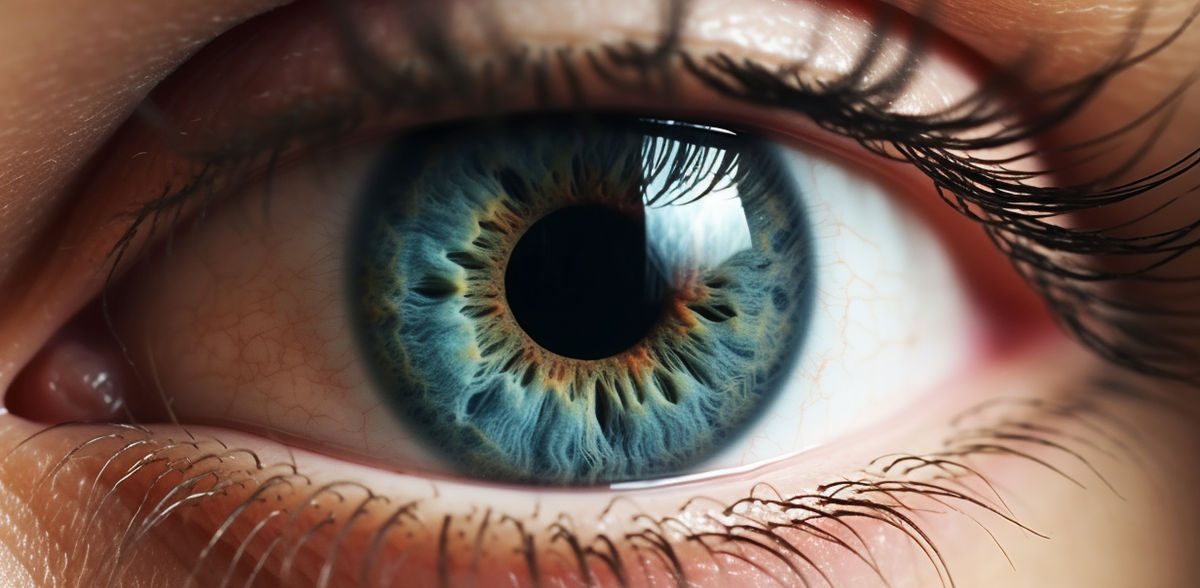How your eye color affects your health
Iris color - a little noticed risk factor
Advertisement
From light blue or gray to greenish and deep brown tones: the iris or iris of the eye can take on a whole range of color shades. But the color of the eye not only determines a significant part of the external appearance. As is known today, the color of the iris is also related to the tendency to certain eye diseases and the outcome of corneal transplants, for example. The fact that eye color acts here as an independent risk factor has for a long time received little attention, according to the German Ophthalmological Society (DOG). Experts of the professional society give an overview of what is known about this connection.
The color of a person's eyes depends on the concentration of melanin in the iris - the pigment that determines not only the color of the eyes but also the color of the skin and hair. "The melanin always has the same brownish color - even green and blue eyes have no other pigments," explains Professor Claus Cursiefen, M.D., Director of the Center for Ophthalmology at the University Hospital of Cologne and Secretary General of the DOG. The other color shades are based on light refraction effects that come into play with different melanin contents.
Without melanin at all - as in people with the congenital pigment disorder albinism - the eyes remain very bright; depending on the incidence of light, even the red background of the eye can shimmer through. "People with ocular albinism are known to have impaired eye development overall," Cursiefen says. Because melanin is present not only in the iris but also in the pigment epithelium of the retina, without this pigment there can be significant maldevelopment in the fundus of the eye and subsequent vision problems.
Light eyes: Higher risk of choroidal tumors and AMD
But even leaving aside the extreme case of pigment disorder, the melanin content of the iris can have an impact on eye health. This is because, just as in the skin, melanin protects the iris from the influence of sunlight. It filters both the visible part of the light spectrum - people with very bright eyes therefore react particularly sensitively to strong light incidence - and its UV component. Lower melanin levels therefore also increase the risk of developing what is known as uveal melanoma, an aggressive tumor of the choroid.1 "Although this type of cancer is very rare, it is found 20 to 30 times more frequently in people of European descent than in people of Asian or African descent," explains Professor Nikolaos Bechrakis, MD, President of the DOG and Director of the University Eye Hospital in Essen.
Lower protection against the harmful effects of sunlight can probably also explain the observation that people with light eyes are more likely to develop age-related macular degeneration (AMD) than people with dark eyes. "Free radicals, oxidative stress and the accumulation of waste products in the retinal area play a role in the development of AMD - processes that are intensified by UV light," Cursiefen explains. A correlation between eye color and AMD risk has not been found in all studies, the expert said. "However, an extensive meta-analysis with almost 130,000 participants was able to prove that at least the wet form of AMD is significantly more common in people of European origin than in people with Asian or African roots," reports the ophthalmologist from Cologne.2 However, it is still unclear whether this is mainly due to eye color or whether other genetic factors also play a role.
Dark eyes: More cataracts, more frequent complications with transplants
Dark-eyed people, on the other hand, are at a disadvantage when it comes to developing a lens opacity, also called cataract. This eye disease develops two to four times more frequently in people with brown eyes than in blue-eyed people - an effect that has also been demonstrated within the white population and thus appears to be independent of ethnicity.2 "One theory on this is that the more light is absorbed by the iris, the higher the temperature in the anterior chamber of the eye," explains Cursiefen. Accordingly, a dark iris would be expected to have a slightly higher temperature exposure, which in turn is a known risk factor for the development of cataracts. For example, heat-related cataract is recognized as an occupational disease in welders.
The outcome of surgical procedures on the eye may also depend on eye color. In corneal transplantation, in which the entire thickness of the cornea is replaced ("penetrating keratoplasty"), rejection reactions and other complications are observed more frequently when the iris is dark. "Here, an influence of melanin on the immune system in the anterior chamber of the eye is suspected," Cursiefen says. Possibly the pigment intensifies inflammatory processes.
Regardless of this observation, the number of classic, perforating corneal transplants has been declining sharply for several years in favor of minimally invasive techniques. In a separate paper, Cursiefen and colleagues therefore studied the complication rate of minimally invasive DMEK ("Descemet Membrane Endothelial Keratoplasty"), in which only the innermost layer of the cornea is transplanted. "Here, we were unable to demonstrate any effect of eye color on graft survival," Cursiefen said.3 Apparently, the much gentler approach succeeded in avoiding immune activation in the eye, thus eliminating the influence of melanin.
The goal is to compensate for increased risks due to iris color
"The examples show that seemingly insignificant factors such as eye color could well be relevant in everyday clinical practice," the DOG experts summed up. Now, they say, it is necessary to further define these complex relationships, to take them into account in treatment and, wherever possible, to compensate for increased risks and disadvantages.
Note: This article has been translated using a computer system without human intervention. LUMITOS offers these automatic translations to present a wider range of current news. Since this article has been translated with automatic translation, it is possible that it contains errors in vocabulary, syntax or grammar. The original article in German can be found here.
Original publication
1 Sun HP,Lin Y,Pan CW. Iris color and associated pathological ocular complications:a review of epidemiologic studies. Int J Ophthalmol 2014;7(5):872-878.
2 Pugazhendhi A et al. Neovascular Macular Degeneration: A Review of Etiology, Risk Factors and Recent Adavnces in Research and Therapy. Int J Mol Sci. 2021 Feb; 22(3): 1170.
3 Hayashi T, Hos D, Schrittenlocher S, Siebelmann S, Matthaei M, Franklin J, Clahsen T, Bock F, Bachmann B, Cursiefen C. Effect of Iris Color on the Outcome of Descemet Membrane Endothelial Keratoplasty. Cornea. 2020 Jul;39(7):846-850





















































